A forthcoming DW documentary looks into the role of classical music during the Holocaust. For Anita Lasker-Wallfisch, a cellist at Auschwitz, music saved her life.
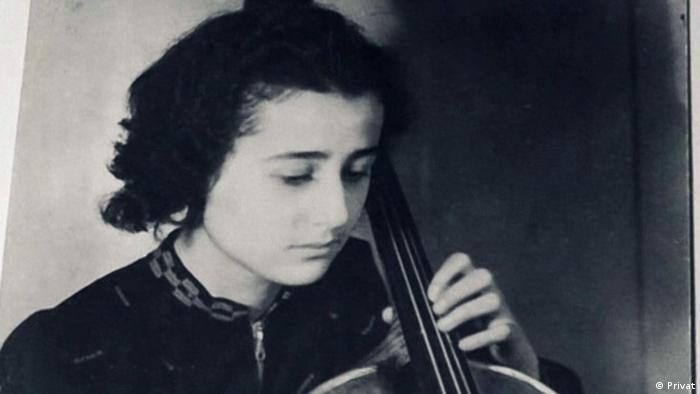
Anita Lasker-Wallfisch played in an orchestra for young girls at the Auschwitz concentration camp
When 17-year-old Anita Lasker-Wallfisch stood on the ramp to enter Auschwitz-Birkenau, she was certain that death awaited her.
It was December 1943, and she had already witnessed her parents being deported, then disappearing. "So this is now the last stop," Lasker-Wallfisch, now 96, recalls thinking during the "admission ceremony."
When an officer asked her what she used to do, she replied fearfully: "I played the cello." Moments later, she was approached by the leader of the newly founded concentration camp girls' orchestra, Alma Rose. "I was scared stiff, naked and Alma Rose asks me: 'Where and what did you study?' It was an insane conversation."
The cello saved her life
In an interview for the upcoming DW music documentary "Der Klang der Diktatur — Klassik unterm Hakenkreuz" ("The Sound of Dictatorship — Classical Music under the Swastika"), written and directed by Christian Berger, Lasker-Wallfisch recalls how the cello saved her life.
She was accepted into the 56-piece orchestra of the women's camp. "We were children and amateurs," she says.
Rose, the niece of Jewish composer Gustav Mahler, who was labeled "degenerate" by the Nazis, arranged pieces for the ragtag musical troupe herself. Marches were especially in demand; the orchestra played for the workers at the gate of the women's camp each morning and evening, even in freezing cold weather.
Although the cellist was spared from doing punitive manual labor, she did not feel safe. "They won't send us to the gas chamber only as long as they want music. It's just a reprieve!" she thought.
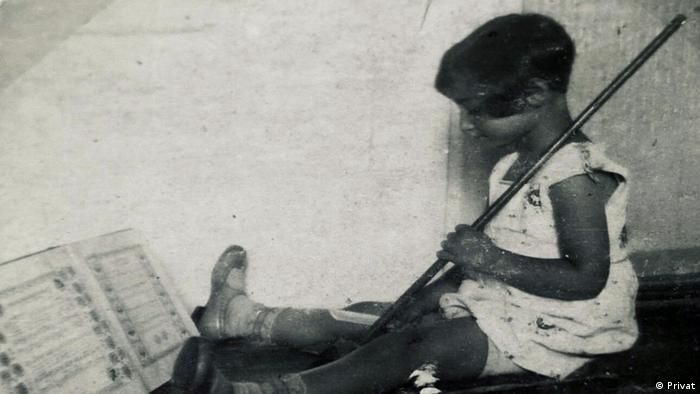
Lasker-Wallfisch had already experienced the disappearance of family members when she arrived at Auschwitz
But why did the Nazis even bother to play music for the prisoners they murdered? "This mentality is so perverse that it's hard to comprehend, but it's essential: Music and the arts were used as part of the murder machine," Norman Lebrecht told DW. "And the whole of the musical establishment and the music profession in Germany either turned a blind eye or collaborated."
The British music journalist has been researching the role of classical music under the Nazis for many years. "Culture was one of the ways to justify Nazi rule in Germany" — it was a sort of cover for the Nazis, Lebrecht points out. "They could say, we are a cultural nation, we are a cultural people. You couldn't possibly suspect that we're doing something that was uncultural."
Jewish musicians play for SS mass murderers
Hitler himself was aware of the power of music. "It is certain that music is to be addressed as the greatest shaper of feelings and sensations that move the mind," he said at the NSDAP Party Congress in 1938.
The cynical reality was that, though Jewish composers and musicians were ostracized and murdered, Nazis such as concentration camp doctor Josef Mengele had classical music pieces played to them by Jews including Lasker-Wallfisch in Auschwitz.
Even Hitler's private record collection is said to have included recordings by Jewish musicians.
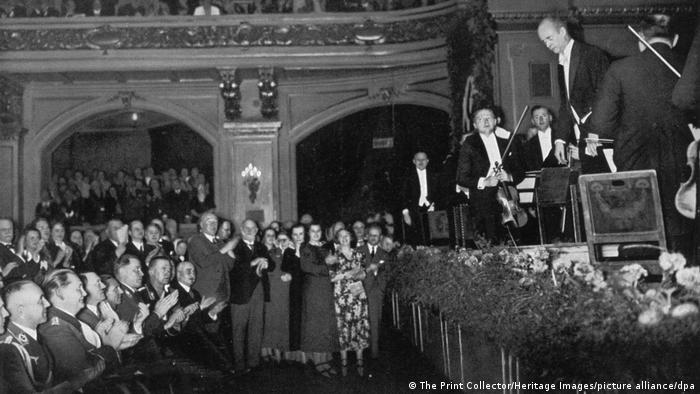
Conductor Wilhelm Furtwängler made a pact with the Nazis to save himself
The new DW music documentary addresses these contradictions and, for the first time, summarizes classical music events as they related to the Third Reich in their entirety.
The film's two main characters represent musical life under the Nazis in very different ways: Star conductor Wilhelm Furtwängler made a pact with the Nazis, while Lasker-Wallfisch survived thanks to her musical talent.
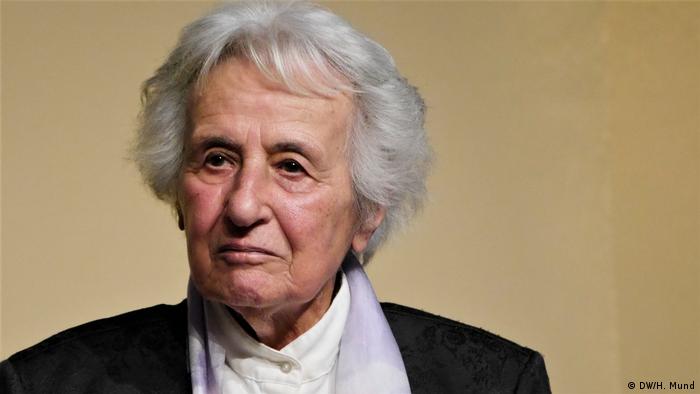
ANITA LASKER-WALLFISCH AND THE POWER OF MUSIC
Hope: a survival strategy
A successful cellist in Great Britain, she toured the world — but long steered clear of Germany. It was only later in her career that she traveled to the land of her birth to tell students and young people about her experiences as a Jew in the Nazi era. A survivor of the Holocaust, Anita Lasker-Wallfisch is now well known in Germany. On July 17, she celebrates her 95th birthday in London.
12345678910
This dramatic period in history is brought to life through historical film footage that has been digitally restored and carefully colorized.
The documentary includes scenes of Hitler at the Bayreuth Festival, Furtwängler's birthday concert for the Führer, composer Richard Strauss at the opening of the 1936 Olympic Games, and footage of cellist Lasker-Wallfisch being interviewed by British journalists after the liberation of the Bergen-Belsen concentration camp, where she was deported shortly before the end of the war.
Lasker-Wallfisch: 'Music is untouchable'
Lasker-Wallfisch can still remember the moment very well. The then 19-year-old wanted the whole world to know about the atrocities committed against Jews. "What I was trying to describe was actually unbelievable. How do you describe Bergen-Belsen? You walk on corpses. It's impossible to describe."
In 1946, the cellist emigrated to Britain. She did not visit Germany again until 1994. After decades of not speaking about what she had experienced, she has extensively discussed her experiences in recent years. In addition to giving numerous lectures, she also gave a speech on the topic of antisemitism at the German Bundestag in 2018.
Anita Lasker-Wallfisch is not bitter and does not hold a grudge. Despite the unimaginable horrors she endured, one thing was always there for her: music. "They can't destroy it! Music is music," she said. "It's untouchable."
The filming of the DW music documentary "The Sound of Dictatorship — Classical Music under the Swastika" has already begun.
This article was translated from German.
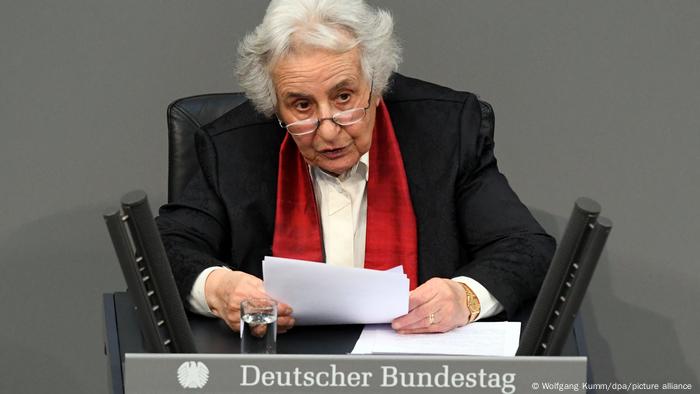
No comments:
Post a Comment